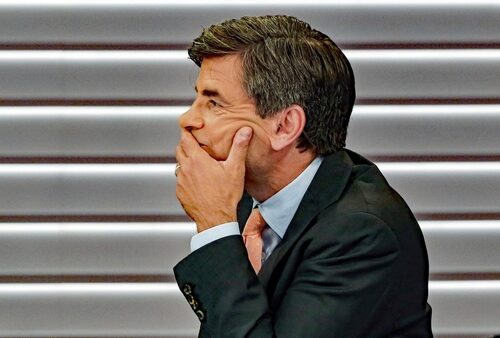
Bidenomics Leads To Missing Jobs Mark In October As Unemployment Rises
New data reveals that the American job scene experienced a slump in October, with job creation down to just 150,000 new positions, missing the anticipated number of 179,000, according to Friday’s Bureau of Labor Statistics release.
This tepid growth contrasts sharply with September’s robust figures, initially reported at 336,000, but later adjusted to 297,000.
Unemployment increased to 3.9%, a level not seen since January of the previous year. This uptick could signify mounting challenges within an economy that has so far withstood Federal Reserve efforts to manage inflation.
Private sector jobs were notably fewer, adding only 99,000 positions against the expected 113,000. This development has sparked debate regarding the current economic strategies under President Joe Biden’s administration.
Townhall reported on Alfredo Ortiz from the Job Creators Network pointedly stated that “cracks in the labor market continue to emerge.” He further emphasizes the issue of shrinking real wages, which erodes consumer purchasing power.
Amid these trends, the Federal Reserve is caught between curbing inflation and fostering economic growth. October’s numbers suggest that the Fed might consider halting interest rate hikes, which was previously deemed unlikely by market analysts.
Despite the recent chill in job growth, the job market had previously defied recession forecasts for 2022. Michael Lebowitz credits the resilience to the pandemic-era stimulus that fueled consumer spending and inflation.
https://t.co/rXsoV7we3y
The U.S. economy missed estimates and added just 150,000 jobs in October according to the latest report from the Bureau of Labor Statistics released Friday morning. The unemployment rate increased to 3.9 percent — the highest monthly read since the Jan.— Clayton Blanchard (@ClayBlanche1951) November 3, 2023
Economic indicators often lag, leaving policymakers relying on past data to make future decisions. It’s important to remember that revisions can change the outlook significantly.
The economy might be tilting towards a recession, with yield curves inverting and the Leading Economic Index’s rate of change supporting this potential shift. However, it’s noteworthy that job and retail sales data usually need to catch up to such economic signals.
Despite historical precedents that suggest economic confidence before recessions might be ill-placed, consumer spending has stayed strong. David Kelly of JPMorgan Asset Management notes a significant rise in spending, adjusted for inflation, though questions remain about its sustainability.
As autumn progresses, the American public is left wondering whether the job market cooldown is a brief dip or a sign of a longer economic downturn.
CNBC: The underemployment rate "continues to move up" while labor force participation is "going in the wrong direction."
That's Bidenomics! pic.twitter.com/VrBqdUTGEt
— RNC Research (@RNCResearch) November 3, 2023


